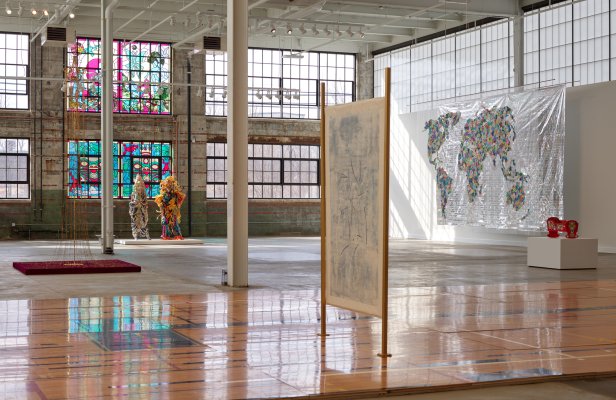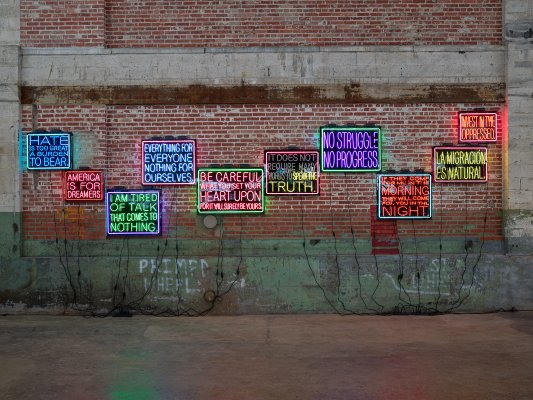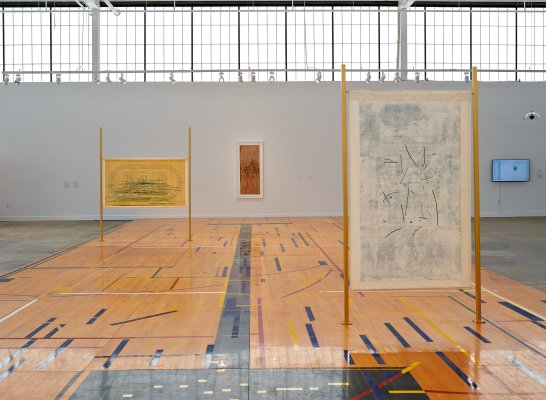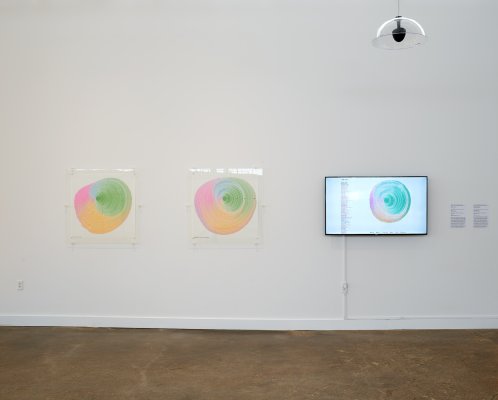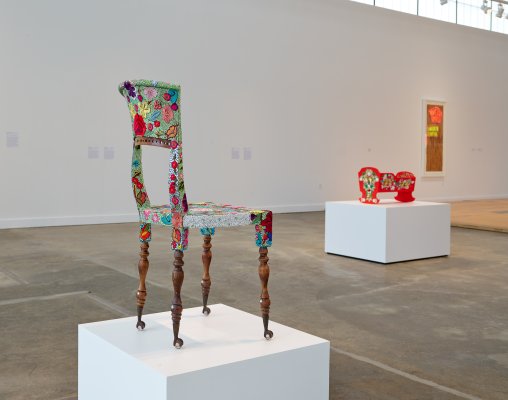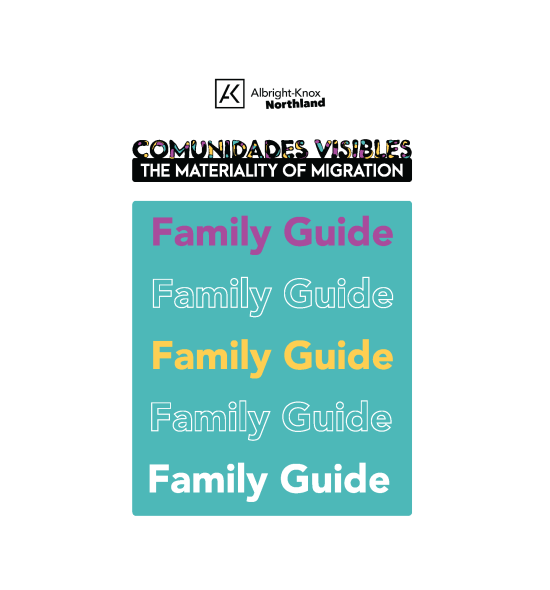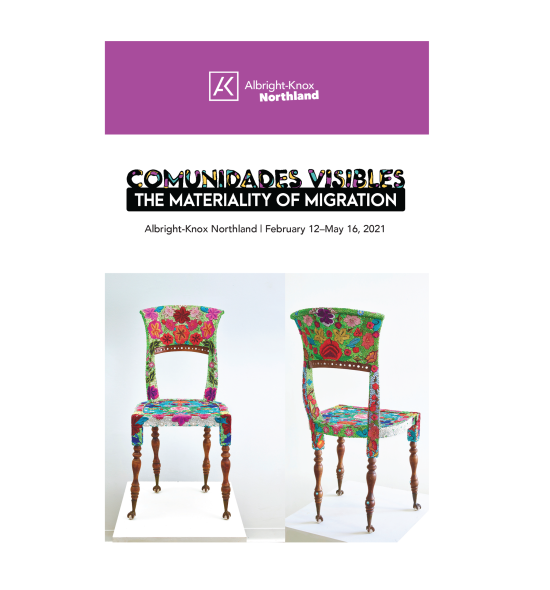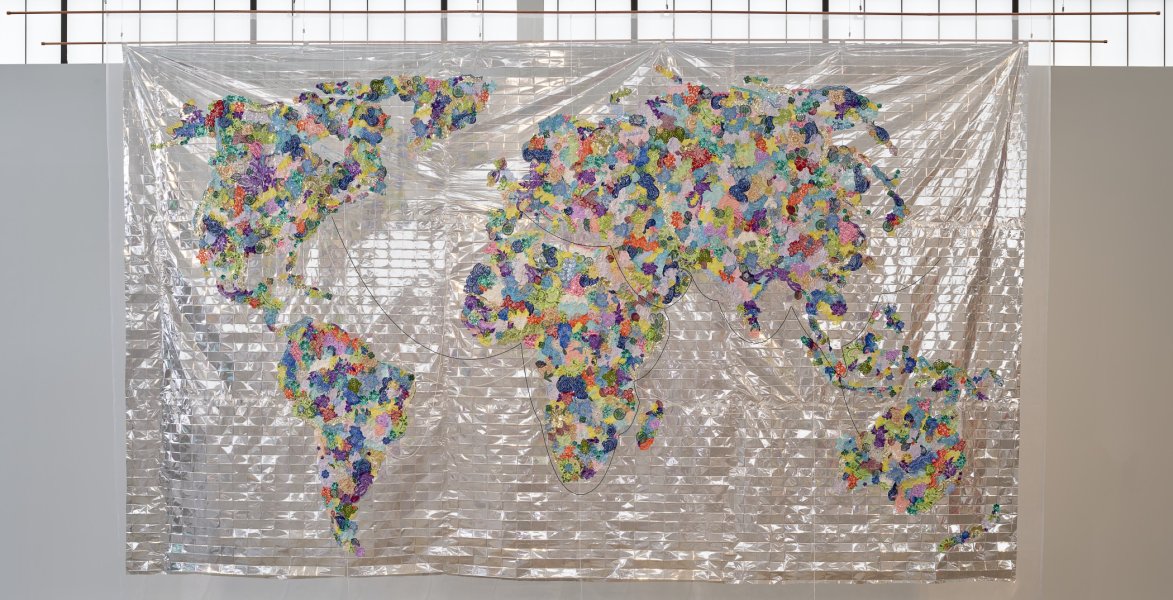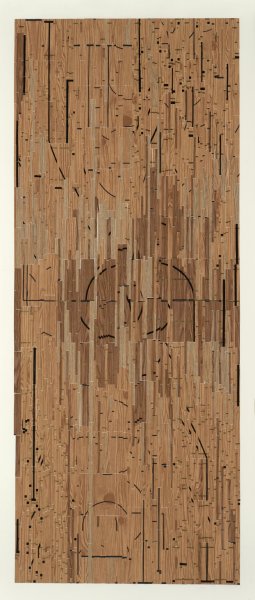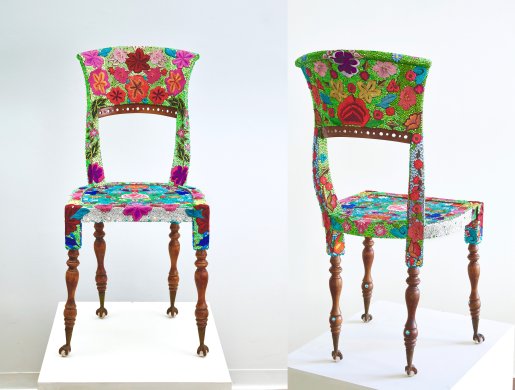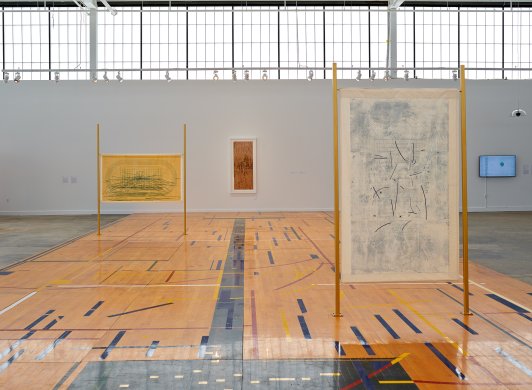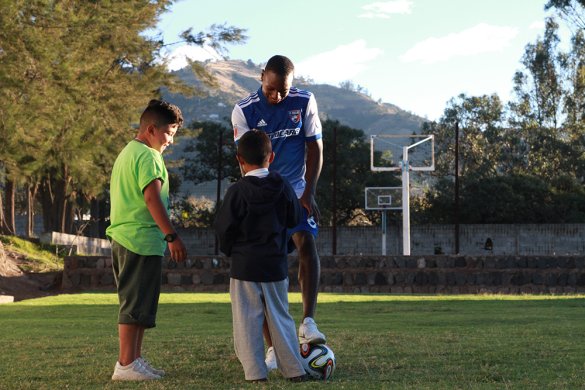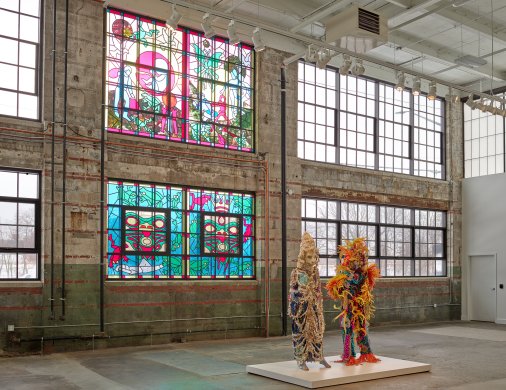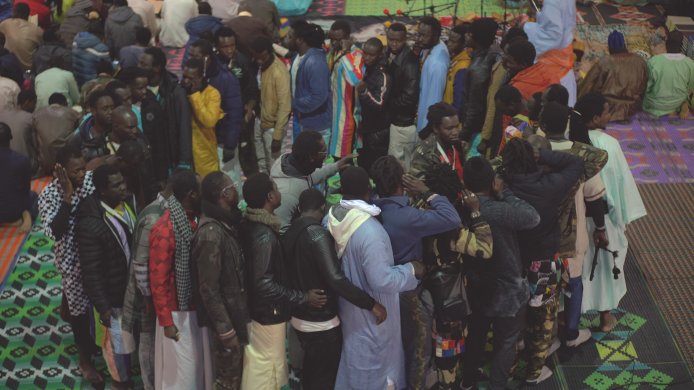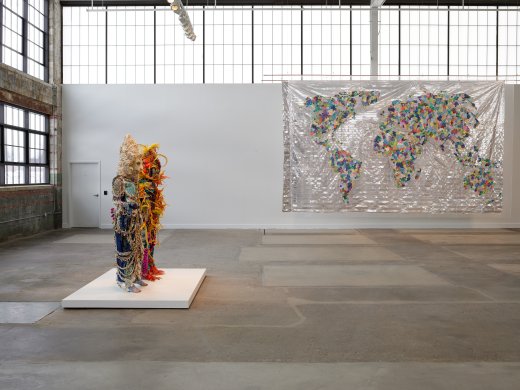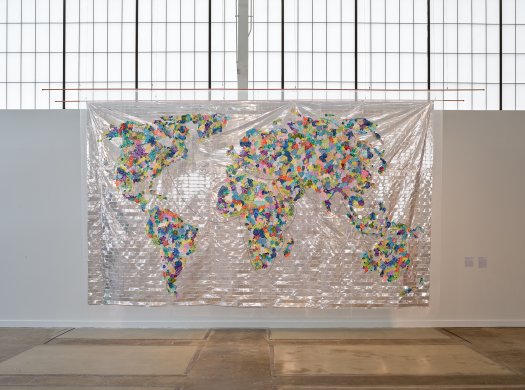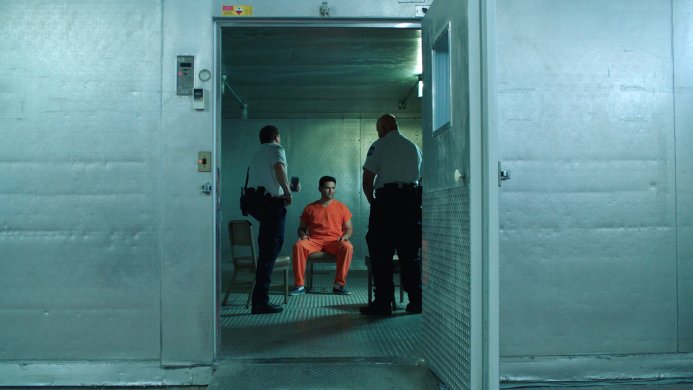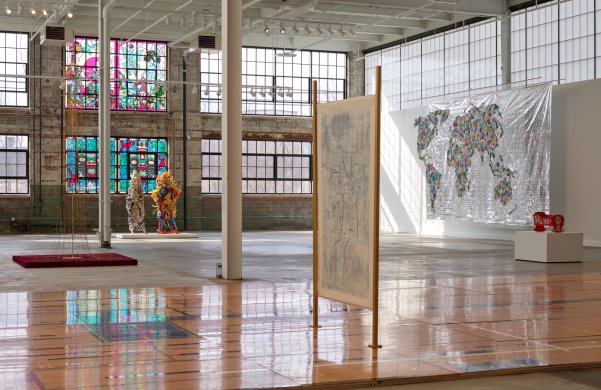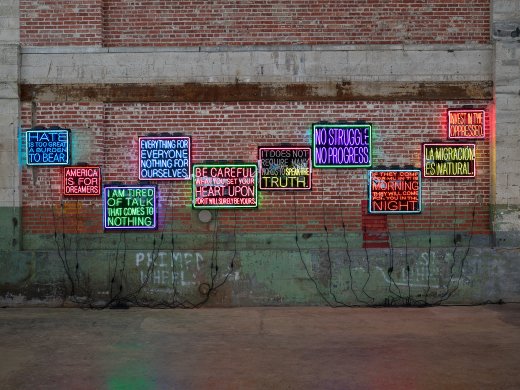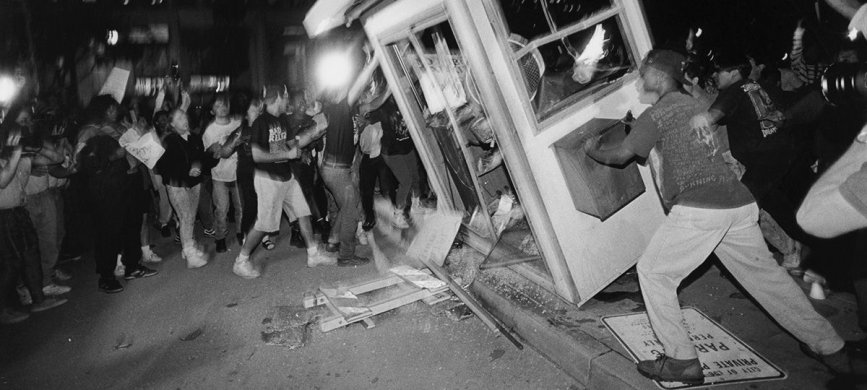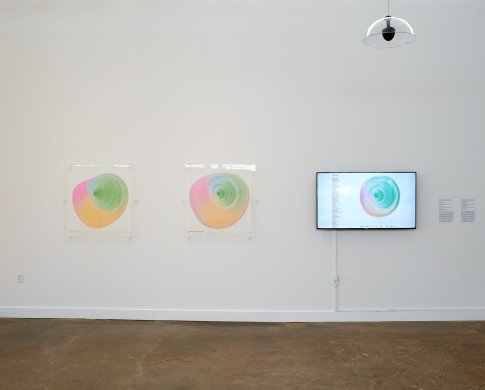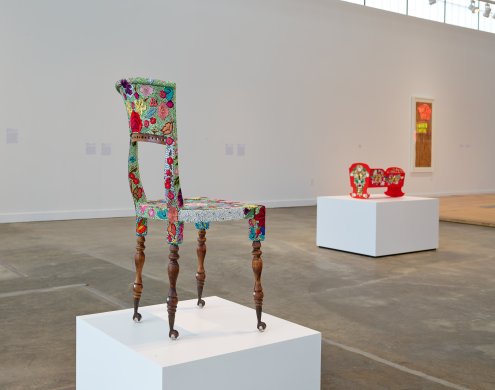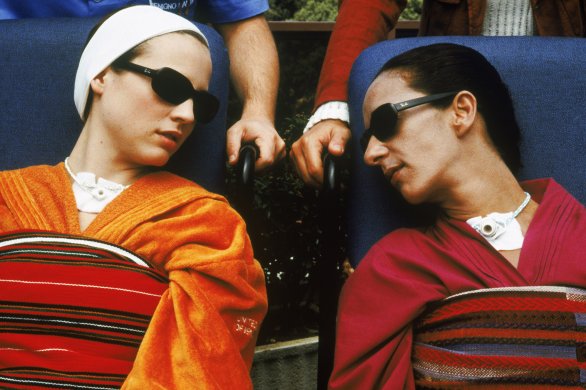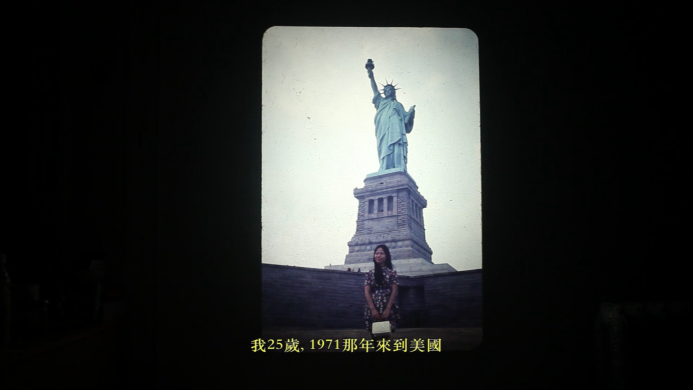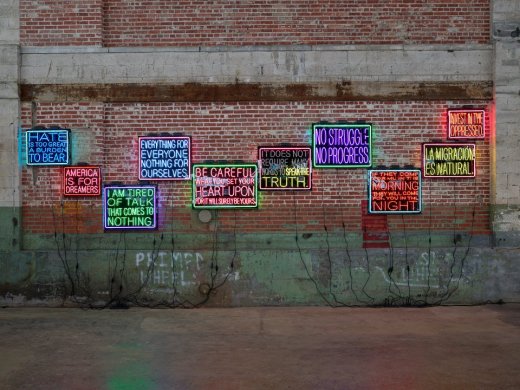About the Artists
Carolina Aranibar-Fernández is a Bolivia-born artist based in Phoenix, Arizona. She creates performances and site-specific installations that respond to the situation at the border between Mexico and the United States, as well as interrogate the history of material and human displacement around the world.
Esperanza Cortés was born in Colombia and lives in New York City. Using beads, gold, and embroidery, she explores her family history and the role of women in Latin America and Europe.
Raúl De Nieves, a New York City-based artist born in Mexico, produces faux stained-glass windows using mundane materials such as cellophane and tape, then populates his colorful and luminous spaces with elaborate human-scaled costumes made out of densely layered beads.
Patrick Martinez is a Los Angeles-based artist who honors his surroundings through the lens of his background as an American of Mexican and Filipino descent. In his multimedia practice, he often incorporates everyday materials such as neon signs into sculptural paintings.
Ecuador-born, New York City-based artist Ronny Quevedo explores the layered histories of his heritage, his parents’ lives, and the collective experience of sports in his large-scale installation practice as well as his wall-based drawing and collage works.
Originally from Portugal and currently based in Boston, Pedro M. Cruz explores information in metaphoric and figurative ways in his data visualization projects. Brazil-born, Buffalo-based artist Felipe Shibuya’s collaborative and research-driven practice merges science and art into powerful messages highlighting the relationship between humans and nature. John Wihbey is a researcher from Boston who worked closely with Cruz and Shibuya to analyze and picture census data for works included in this exhibition.
Sobre los Artistas
Carolina Aranibar-Fernández es una artista boliviana que vive en Phoenix, Arizona. Carolina crea actuaciones e instalaciones que responden a la situación en la frontera entre los Estados Unidos y México, y también cuestiona la historia del desplazamiento de humanos y materiales por todo el mundo.
Esperanza Cortés nació en Colombia y vive en New York City. Usando mostacillas, oro, y bordado, Esperanza explora la historia de su familia y el papel de las mujeres en América Latina y Europa.
Raúl De Nieves, un artista basado en New York City que nació en México, produce vitrales falsos usando materiales mundanos como celofán y cinta, y después llena los espacios luminosos con figuras decoradas laboriosamente con mostacillas.
Patrick Martinez es un artista basado en Los Ángeles que enaltece su entorno a través de su experiencia como americano de origen mexicano y filipino. En su práctica, incorpora materiales cotidianos como luz neón en pinturas esculturales.
Ronny Quevedo nació en Ecuador y vive en New York City. El artista explora las capas de las historias de su familia, y la experiencia colectiva de deportes en su práctica de instalación y también en sus dibujos y encolado.
Originalmente de Portugal y ahora basado en Boston, Pedro M. Cruz explora información en una manera metafórica y figurativa con sus proyectos de visualización de datos. La practica colaborativa de Felipe Shibuya (Brasilero, basado en Buffalo) es basada en investigación y une ciencias y arte en mensajes potentes que destaca la relación entre humanos y la naturaleza. John Wihbey es un investigador de Boston que trabajó con Cruz y Shibuya en analizar y representar los datos del censo para obras incluidas en esta exhibición.
